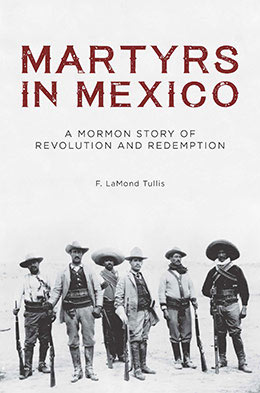Acknowledgments
Over the years, numerous people have contributed to this monograph. Among the most important are the Church members I interviewed in the state of Hidalgo in May of 1975. Some of them, then advanced in years and now deceased, were among the first members—if not their children—who were old enough to have firsthand memories of some of the early happenings in their villages and nearby environs. Principal people I interviewed are Florencia Cornejo de Trujillo, Trinidad Hernández, Agrícol Lozano Herrera, María Concepción Monroy de Villalobos, Ezequiel Montoya Ortiz, Jorge Montoya, Violeta Pérez de Villalobos, Elena Parra de Pérez, María Elena Pérez Parra, Denia Sion, Emilio Trujillo Linares, Saúl Villalobos, Benito Villalobos Rodríguez, and Efraín Villalobos Vásquez. In 1974, in Provo, Utah, I had an opportunity to interview an aged W. Ernest Young, who played an enormous role in the evolution of the Church in San Marcos.
Aside from these now-deceased members (two or three still remain as of this writing), María Guadalupe Monroy Mera—popularly known as Guadalupe, or just “Lupe”—who died in 1965 at age eighty and was one of the first three members to be baptized in San Marcos, left a meticulously written record that immensely facilitated the writing of this historical narrative. Within her 113 pages (closing in 1944 with an appendix written in 1962) transcribed from her original handwriting, Guadalupe kept the most detailed records one might ever hope to find anywhere of small-village events of interest to the local history of the Church. She also researched supplemental documents and inventoried her memory to prepare her San Marcos narrative, manuscript copies of which are in the L. Tom Perry Special Collections in Brigham Young University’s Harold B. Lee Library and in the LDS Church History Library in Salt Lake City.
Guadalupe also kept a voluminous diary containing autobiographical information and additional notes about happenings in San Marcos among the Saints and with her family. For undisclosed reasons, the diary is not available for public access but is closely held for family members. Nevertheless, Minerva Montoya Monroy, a great grandniece, has graciously made relevant pages available to me via facsimile and transcription. In many other ways, Minerva has been immensely helpful to this project, for which I am profoundly grateful.
Additional help of immense importance has come from some of the other descendants of Rafael Monroy, one of the two martyrs in San Marcos, principally through his granddaughter Maclovia Monroy Espejel; her husband, Abel Montoya Gutiérrez; and their children Elder Hugo Montoya Monroy and the previously mentioned Minerva Montoya Monroy. They have collected, collated, and placed on their family web page numerous documents, narratives, and photos dealing with their forebears in San Marcos.[1]
Some of the descendants of Vicente Morales, the other martyr in San Marcos, have also provided biographical information regarding their forebear, particularly Ruth Josefina Saunders Morales de Villalobos, granddaughter of Vicente Morales. Nuria Villalobos and Gustavo López Hidalgo have also provided helpful information.
In 2014, I became acquainted with Laura Smith, who, in the 1970s, served a health-services mission in the state of Hidalgo. Her meticulously tended diary added important details to the Church’s health and agricultural-services project in Hidalgo in the 1970s.
More proximately, I have had the good fortune to receive superb substantive and editorial critiques of an earlier version of this monograph from Bradley Lunt Hill, Matthew Geilman, Clint Christensen, Elder Hugo Montoya Monroy, Richard Thomas, Minerva Montoya Monroy, Sharman Gill, and Susan Stevenson. Their valuable contributions helped correct internal errors or omissions while at the same time providing startling expertise in proofing a text. Eileen Roundy Tullis also helped collect some of the information for this monograph. I am grateful for the work of the Religious Studies Center staff: Thomas A. Wayment, Joany O. Pinegar, Brent R. Nordgren, R. Devan Jensen, Tyler Balli, Mandi Diaz, Kimball Gardner, Megan Judd, Emily Strong, Shannon Taylor, and Madison Swapp.
Of course, while we all can take some credit for this monograph’s virtues, I alone must be bear the burden of any factual errors or erroneous interpretations found herein. I have tried faithfully to minimize them to the extent that my abilities have allowed.
Notes
[1] “Linaje Monroy en el Estado de Hidalgo, Mexico,” https://
